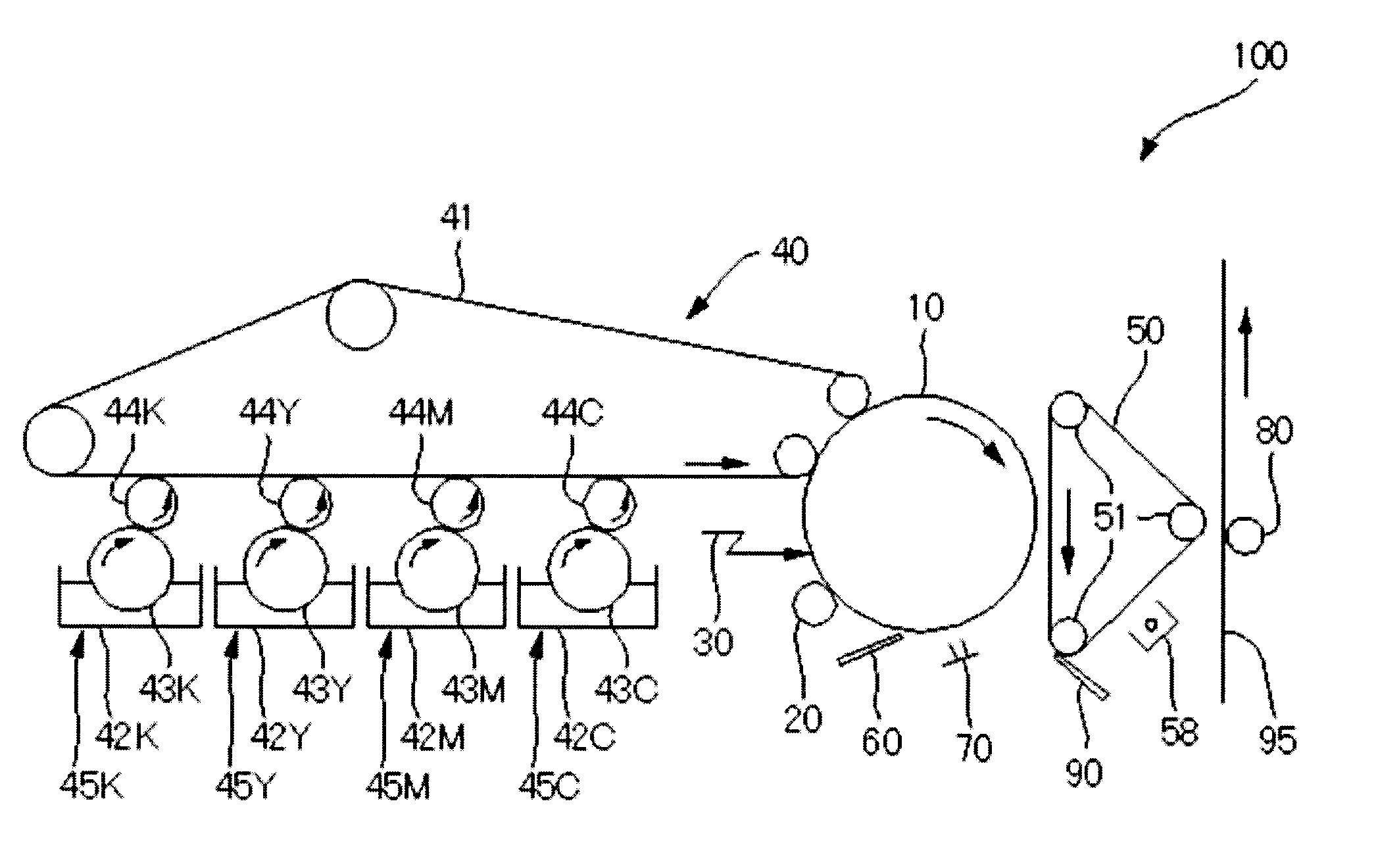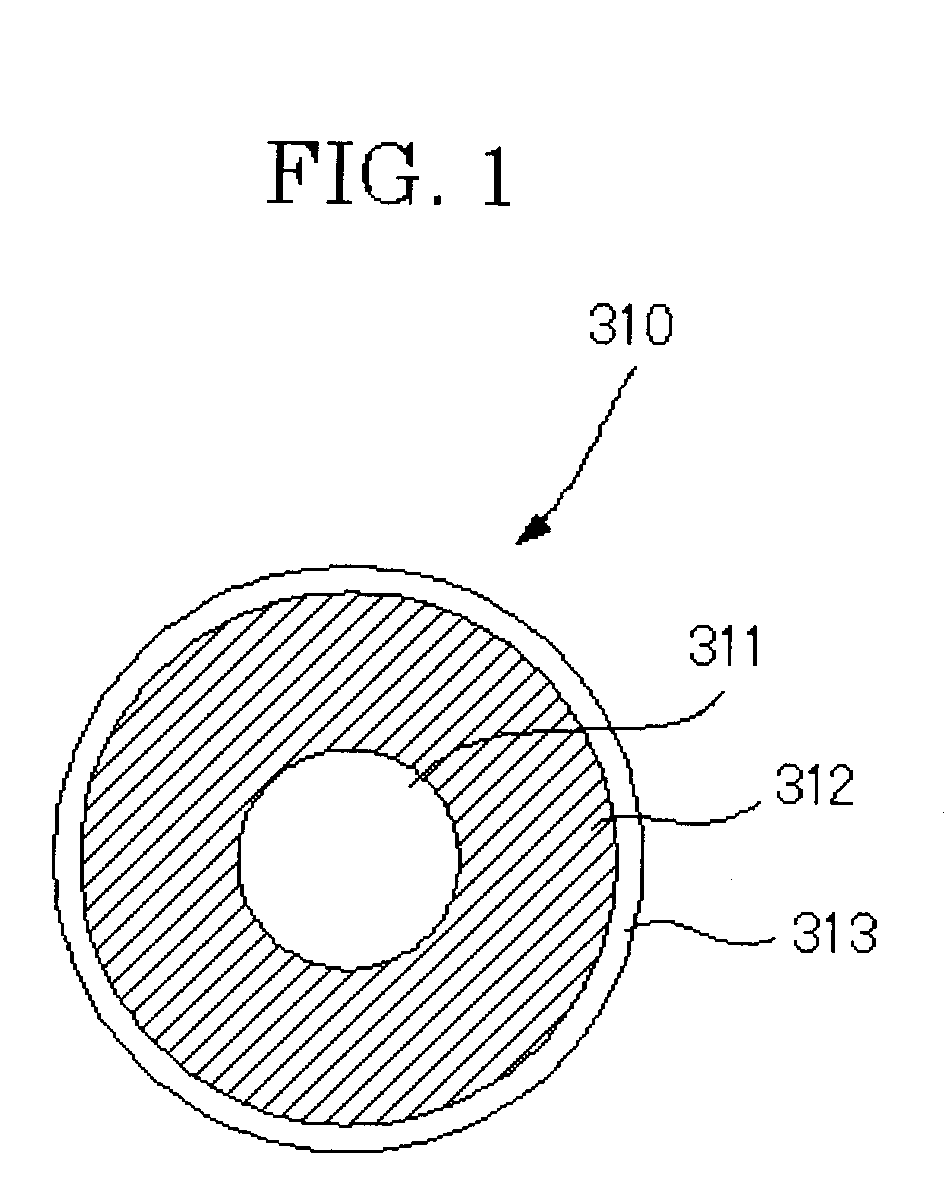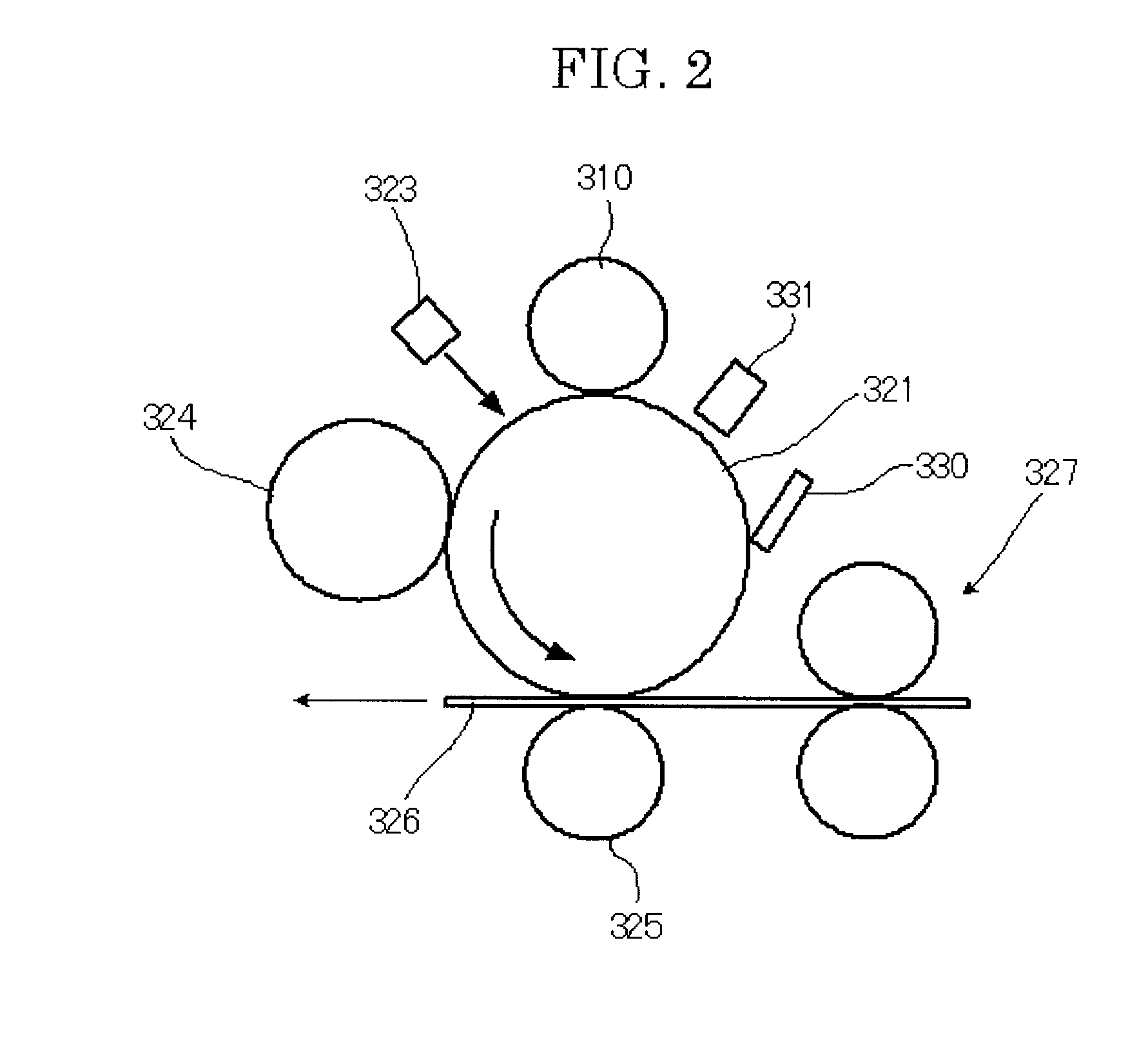Image forming apparatus, image forming method, and process cartridge
- Summary
- Abstract
- Description
- Claims
- Application Information
AI Technical Summary
Benefits of technology
Problems solved by technology
Method used
Image
Examples
synthesis example 1
—Purification of Rosin—
[0473]To a 2,000 ml volumetric distilling flask equipped with a distilling tube, a reflux condenser, and a receiver, 1,000 g of a tall rosin was added and distilled under a reduced pressure of 1 kPa to collect a distillate at 195° C. to 250° C. as a fraction. Hereinafter, a tall rosin subjected to purification is referred to as an unpurified rosin, and a rosin collected as the distillate is referred to as a purified rosin.
[0474]First, 20 g of each rosin was pulverized by a coffee mill (National MK-61M) for 5 seconds and sieved by a screen having an opening size of 1 mm. The rosin powder 0.5 g was added in a vial for head space (20 ml). After sampling a head space gas, impurities in an unpurified rosin and a purified rosin were analyzed in the following manner by head space GC-MS. The results are shown in Table 1.
[0475]A. Head Space Sampler (HP7694 manufactured by Agilent Co.)
[0476]Sample Temperature: 200° C.
[0477]Loop Temperature: 200° C.
[0478]Transfer Line Te...
synthesis example 2
—Synthesis of Acrylic Acid-Modified Rosin A—
[0500]To a 10 L volumetric flask equipped with a distilling tube, a reflux condenser, and a receiver, 6,084 g (18 mol) of a purified rosin (SP value: 76.8° C.) and 907.9 g (12.6 mol) of acrylic acid were added. After heating from 160° C. to 220° C. for 8 hours, the reaction was performed at 220° C. for 2 hours. Distillation was performed under a reduced pressure of 5.3 kPa at 220° C. to obtain an acrylic acid-modified rosin A. The SP value, glass transition temperature, and modification degree of the obtained acrylic acid-modified rosin A were 110.4° C., 57.1° C., and 100, respectively.
synthesis example 3
—Synthesis of Acrylic Acid-Modified Rosin B—
[0501]To a 10 L volumetric flask equipped with a distilling tube, a reflux condenser, and a receiver, 6,084 g (18 mol) of a purified rosin (SP value: 76.8° C.) and 648.5 g (9.0 mol) of acrylic acid were added. After heating from 160° C. to 220° C. for 8 hours, the reaction was performed at 220° C. for 2 hours. Distillation was performed under a reduced pressure of 5.3 kPa at 220° C. to obtain an acrylic acid-modified rosin B. The SP value, glass transition temperature, and modification degree of the obtained acrylic acid-modified rosin B were 99.1° C., 53.2° C., and 66, respectively.
[0502]An alcohol component, a carboxylic acid component except trimellitic anhydride, and an esterifying catalyst, which are shown in Tables 2 and 3, were added to a 5 liter volumetric four-necked flask equipped with a nitrogen introducing tube, a dewatering tube, a stirrer, and a thermocouple. Polycondensation was performed under a nitrogen atmosphere at 230° ...
PUM
| Property | Measurement | Unit |
|---|---|---|
| Temperature | aaaaa | aaaaa |
| Thickness | aaaaa | aaaaa |
| Pressure | aaaaa | aaaaa |
Abstract
Description
Claims
Application Information
 Login to View More
Login to View More - R&D
- Intellectual Property
- Life Sciences
- Materials
- Tech Scout
- Unparalleled Data Quality
- Higher Quality Content
- 60% Fewer Hallucinations
Browse by: Latest US Patents, China's latest patents, Technical Efficacy Thesaurus, Application Domain, Technology Topic, Popular Technical Reports.
© 2025 PatSnap. All rights reserved.Legal|Privacy policy|Modern Slavery Act Transparency Statement|Sitemap|About US| Contact US: help@patsnap.com



